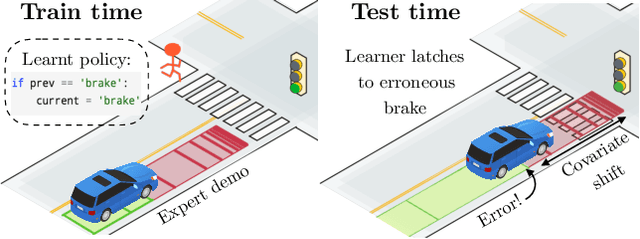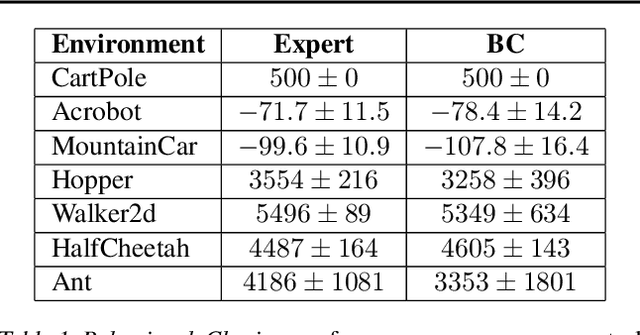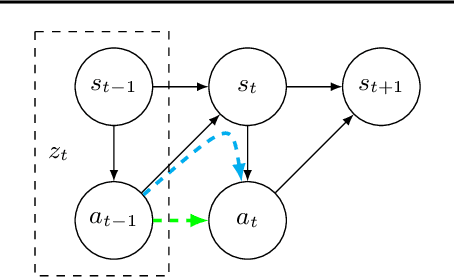Feedback in Imitation Learning: The Three Regimes of Covariate Shift
Paper and Code
Feb 11, 2021



Imitation learning practitioners have often noted that conditioning policies on previous actions leads to a dramatic divergence between "held out" error and performance of the learner in situ. Interactive approaches can provably address this divergence but require repeated querying of a demonstrator. Recent work identifies this divergence as stemming from a "causal confound" in predicting the current action, and seek to ablate causal aspects of current state using tools from causal inference. In this work, we argue instead that this divergence is simply another manifestation of covariate shift, exacerbated particularly by settings of feedback between decisions and input features. The learner often comes to rely on features that are strongly predictive of decisions, but are subject to strong covariate shift. Our work demonstrates a broad class of problems where this shift can be mitigated, both theoretically and practically, by taking advantage of a simulator but without any further querying of expert demonstration. We analyze existing benchmarks used to test imitation learning approaches and find that these benchmarks are realizable and simple and thus insufficient for capturing the harder regimes of error compounding seen in real-world decision making problems. We find, in a surprising contrast with previous literature, but consistent with our theory, that naive behavioral cloning provides excellent results. We detail the need for new standardized benchmarks that capture the phenomena seen in robotics problems.
 Add to Chrome
Add to Chrome Add to Firefox
Add to Firefox Add to Edge
Add to Edge